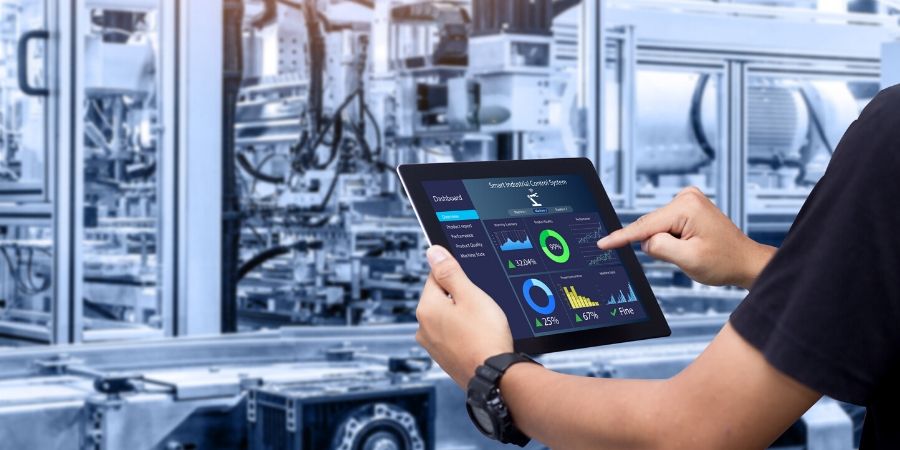
Dave Immerman, Senior Research Analyst, PTC, co-authored this post with Zia Yusuf.
The proper management of equipment impacts an industrial organization’s asset efficiency metrics and related financial statements. Many companies are turning to Industry 4.0 initiatives and digital transformation for tangible improvements in asset efficiencies.
A PTC and Boston Consulting Group (BCG) collaboration presents new research on using cutting-edge complementary technologies to drive asset efficiencies. Specifically, the Industrial Internet of Things (IIoT) and Augmented Reality (AR) are proving critical to managing high-value industrial assets and equipment; 70% of respondents in the report cite they have already demonstrated the value of using IIoT and AR together.
Among the many IIoT and AR use cases illustrated in ‘Unleashing the Power of Data with IoT and Augmented Reality’, those leveraged for managing equipment will be of most value to asset-intensive companies in heavy-industrial sectors including manufacturing. For these industrial companies, the operational status of heavy machinery is fundamental to daily production KPIs such as overall throughput or overall equipment effectiveness.
Managing equipment makes up 37% of total IIoT and AR use cases and are segmented as:
Below we delve into these three use case categories.
To drive engineering excellence and product innovation, manufacturers are constantly striving to improve product quality and performance metrics while expediting new product development and time-to-market. New outcome-based business models such as Product-as-a-Service add another layer of complexity and importance on the product design process.
IIoT data from smart connected products closes the feedback loop for product designers and engineers by replacing assumptions with facts. Real-world IIoT performance and usage data fuels the product designer with important data-based insights for future iterations. The same data can be used as an input for simulation modules or generative design software to gain greater design understanding or create entirely different designs.
AR's visualize capabilities are leveraged in design use cases including Augmented Design Review, where design changes are superimposed on top of physical prototypes, real-world equipment, or within a physical environment. With IIoT added to this product design scenario, we can visually overlay real-world performance data impacting the product in the proposed physical environment as well as simulate ‘what-if’ digital twin scenarios.
Empowering the product designer with IIoT-enabled performance and usage data allows them to make data-based decisions, while AR contextualizes these parameters in 3D.
Heavy-industrial companies are extremely focused on their assets' resiliency and the production efficiencies they underpin. Overall equipment effectiveness and throughput are major manufacturing metrics that are intertwined with the downtime of assets along factory floors and production sites. Preemptively diagnosing problems along these industrial environments is top-of-mind for workers, but many of these machines have traditionally operated in black-boxed environments.
IIoT has unlocked the lucrative data residing in these assets with popular use cases including asset monitoring and predictive maintenance driving higher levels of uptime. Adding AR for equipment monitoring and diagnostics enables the operator to view this real-time IIoT performance data within the 3D environment. The worker can visualize the condition of the entire factory line with x-ray vision into specific assets and their operational status. Analyzing how assets are impacting each other can help identify production line bottlenecks and potential opportunities for optimization.
Physical intervention is common in the industrial world; 3D digital information such as work or service instructions overlaid onto physical equipment can replace 2D paper manuals.
Virtual work instructions is a popular AR use case where overlaying step-by-step instructions can help with assembly, maintenance, operating, and service tasks. BAE Systems provided AR work instructions to its workers ‘in hours and at a tenth of the cost’ of paper methods, cutting their assembly time in-half and training of new employees 30-40% more efficiently.
Adding IIoT into this use case can further inform the worker on their task or action. Operating equipment’s live IIoT data can update maintenance instructions in the worker’s field-of-view based on priority i.e. ‘go fix this machine instead of the one you are fixing now’. It could also update instructions on the physical equipment, where looking underneath the equipment’s physical shell to identify which part is malfunctioning and inform repair instructions on the worker’s AR device.
Paper-based manuals and instructions have been a major productivity bottleneck for industrial companies. Replacing them with updateable AR work instructions alleviates these work constraints and overlaying dynamic IIoT data can even further improve efficiencies.
Considering that an hour of downtime can cost businesses thousands, industrial companies will go to great lengths to preventing it. Managing assets and equipment across industrial operations in factories or in-the-field is a crucial factor to this downtime. While driving exponential value for reducing asset downtime on their own, when IIoT and AR are integrated together these equipment problems can be remediated at record rates and drive unprecedented efficiencies.

Zia Yusuf is a managing director and senior partner in the Silicon Valley office of Boston Consulting Group. He leads the firm’s work in the Internet of Things. You may contact him by email at yusuf.zia@bcg.com.
©Copyright 2025. All rights reserved by Modelcam Technologies Private Limited PUNE.